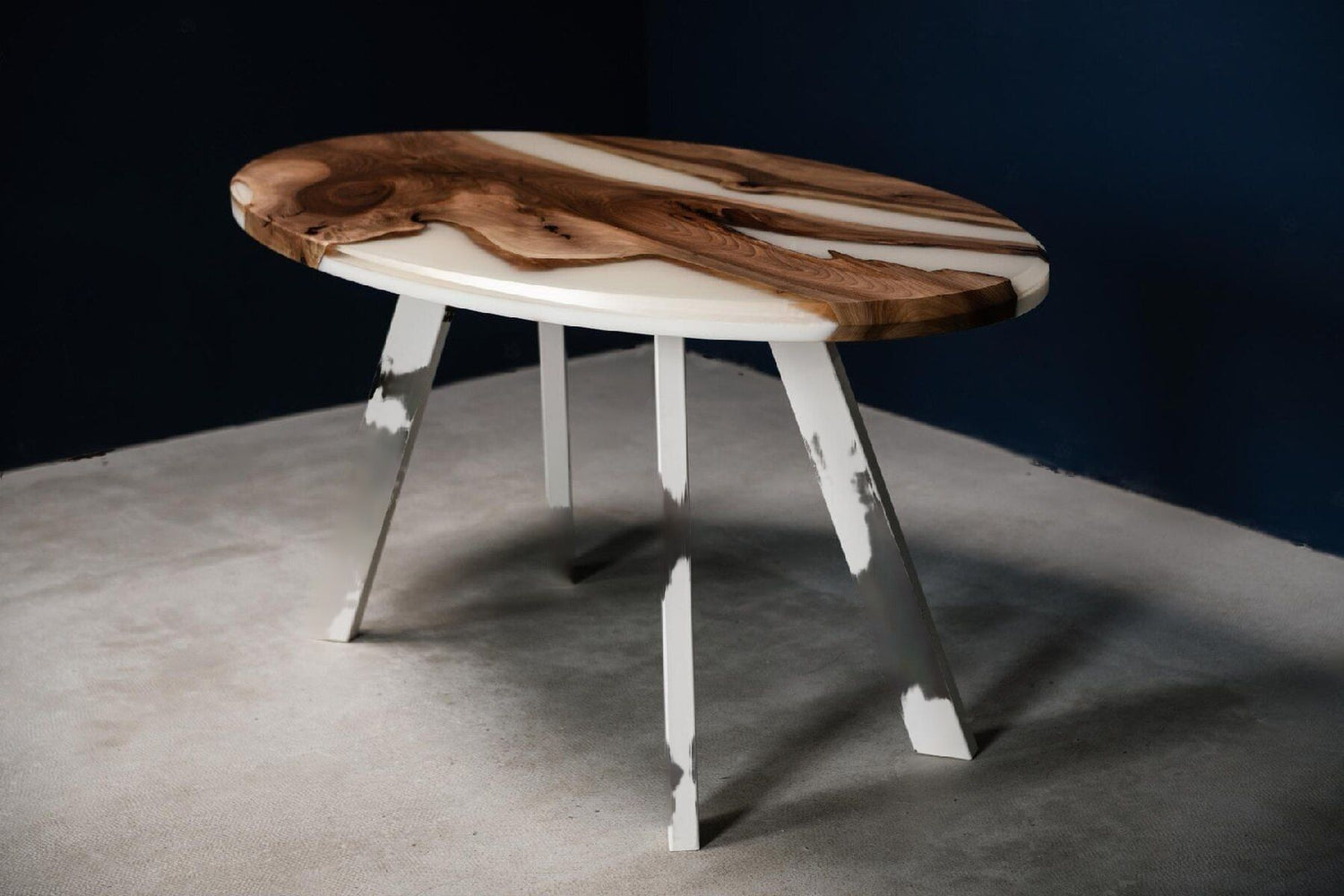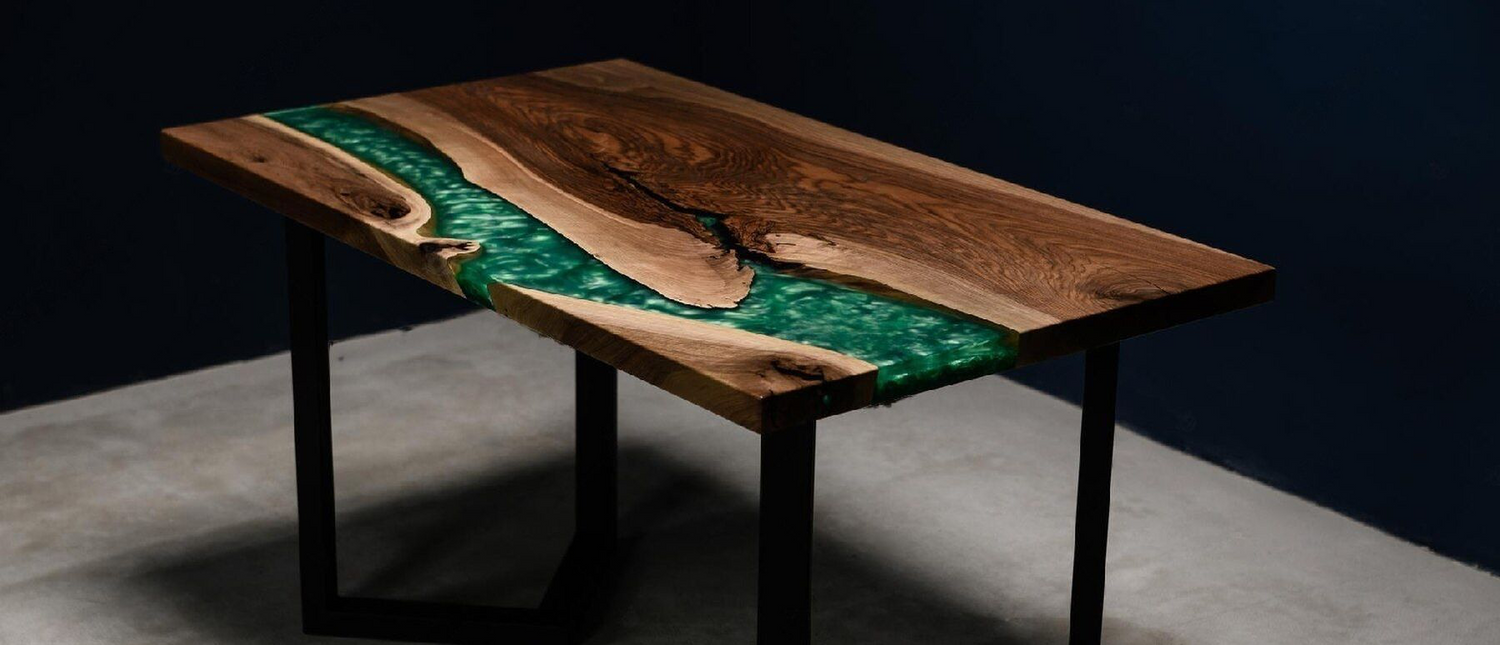
Casting Epoxy Systems are specially developed epoxy resins, which are designed for casting moulds, figures, jewellery and some other applications.
We show you where a Casting Epoxy Systems should be used and what to consider when buying a casting resin.
CASTABLE EPOXY SYSTEM
Introduction to Castable Epoxy Flooring
Casting resins are specially developed epoxy resins, which are designed for casting moulds, figures, jewellery and some other applications.
We show you where a casting resin should be used and what to consider when buying a casting resin.
Casting resin is a low-viscosity epoxy resin, which consists of two components: the actual resin and the matching hardener. When these two components are mixed, a chemical reaction occurs, which causes the mass to harden for some time. And this brings us to the special features of casting resin - its thin consistency. This property allows the resin to penetrate and fill even the smallest gaps and cavities. The thinner consistency also has an influence on the curing time, which is considerably longer. With the casting resin, we therefore have a highly specialised product for very specific applications.
Casting Resin Properties:
- Low viscosity consistency
- Significantly longer curing times
- Therefore longer processing times
- With casting resin thicker layers can be cast
- Due to the thin consistency, layers of paint mix quickly
- High quality Epoxy resin with hard surface once hardened
- UV, stain and scratch resistant
- It dries out ultra clear and is very durable. It dries in 36 hours
Colouring Casting Resin
Casting resin can be coloured like epoxy resin with colour pastes, alcohol inks and colour pigments.
ResinTint Liquid Pigment Set
Glow In The Dark Pigment Powder
"DER
Since casting resin is low viscous, i.e. thin-bodied, different layers of paint mix faster than with epoxy resin. This does not play a role in most applications, but for example in resin art a good colour separation is important.
Casting Resin Molds
The fastest way to start with Resin casting is using silicone molds. They are available in different shapes and sizes - from small resin casting molds for producing resin jewelry to big molds for casting spheres and other geometric shapes.
Silicone Resin Casting Molds
Resin Casting Molds and Tools Set
Casting resins usually cure much more slowly, so they produce less heat. This allows significantly thicker casting layers of up to 10 centimeters.
The maximum amount that can be processed at once is also increased, so that depending on the product, up to 10 kg can be processed at once.
However, please note the manufacturer's instructions, as there are also products with which a maximum of 5 centimetres thick layer can be cast at once.
The heat development is generally a very important issue, because if the layer is too thick or too large, epoxy resin in particular can become so hot that it can cause burns. The quality of the cured mixture also suffers, so that total damage to the project can be the result. If the casting resin also becomes too hot due to the exothermic reaction, toxic fumes are released. Therefore, always wear protective clothing and a breathing mask.
Curing Times
Casting resins need up to one week to cure completely. The huge advantage lies in the processing time: If epoxy resin can only be processed for a few minutes up to one hour, Resin Casting Resin offers products with a processing time of up to 24 hours. This has several positive effects:
- For larger areas, this leaves more time for casting and embedding.
- Especially with large quantities of resin with different colours a lot of time is needed.
- Air bubbles can escape much longer due to the open time.
Applications of Casting Resin
In order not to suffer any setbacks, you should always consider using the right product before pouring resin. Cast resin can be used for the following applications:
Cast resin table / River Table
- Resin Jewellery
- Pouring into silicone molds or other molds
To fill wood with epoxy resin
Instructions for Resin Casting Application
Preparation your Resin Casting
- Provide all necessary materials so that they are always at hand
- Protect the workplace with a cardboard or plastic sheet
- If you want to pour out wood or other materials, tape off any holes well so that the resin remains where you want it to be. It is always astonishing where the thin-bodied casting resin finds a way where it does not belong.
- If you want to cast objects or pour wood, seal the surface with a little epoxy resin first
- Read the cast resin manufacturer's instructions regarding mixing ratio and other safety-relevant information
- Protect yourself with the appropriate protective clothing, safety goggles, nitrile gloves and breathing mask
Mixing Epoxy Casting Resin
- Weigh resin and hardener accurately
- Mix both components carefully and for a few minutes
- If you want to colour the epoxy casting resin, add the colour paste or colour pigments and mix the whole thing again thoroughly
- Let the whole thing stand for one minute so that some of the air mixed in can escape
- Pour the resin mixture into the mold or the cavity to be filled
- Any air bubbles can be removed with a hot air dryer or a Butane Torch
Casting Objects
- If you want to cast objects, first pour a small amount of resin
- Then place the objects to be poured in with a toothpick or wooden spatula
- With heavy materials, the first layer should already be dry so that they do not sink to the bottom
- Fill up the mold generously afterwards, as the material may shrink a little during curing
Clear Casting Resin - How to Achieve transparent Results
If you do not want to colour your casting resin, then for most applications it is desired that the casting resin hardens crystal clear.
-
Clear Casting Resin - How to Achieve transparent Results
If you do not want to colour your casting resin, then for most applications it is desired that the casting resin hardens crystal clear.
Hardness of the Surface
In general it can be said that epoxy resin surfaces are harder than those of cast resins. This need not always be a bad thing, because lower hardness means more flexibility, which can be a great advantage especially when working with wood, glass or other changing materials. For example, wood shrinks due to changing temperatures or humidity. It is important to consider whether these properties are desired or not. For a table or a surface with a high mechanical load, an epoxy resin, which forms a hard and abrasion-resistant layer, is the better choice. It is therefore
Hardness of the Surface
In general it can be said that epoxy resin surfaces are harder than those of cast resins. This need not always be a bad thing, because lower hardness means more flexibility, which can be a great advantage especially when working with wood, glass or other changing materials. For example, wood shrinks due to changing temperatures or humidity. It is important to consider whether these properties are desired or not. For a table or a surface with a high mechanical load, an epoxy resin, which forms a hard and abrasion-resistant layer, is the better choice. It is therefore worth applying a layer of epoxy resin as a finish to achieve better mechanical strength, for example on a wooden table.
Susceptibility to the Inclusion of Air Bubbles
Both epoxy resin and cast resin Both materials are equally susceptible to air bubble entrapment. Air bubbles can escape more easily with epoxy resin because it is a thinner layer. This allows the bubbles to rise to the surface faster and thus burst. However, cast resin also has an advantage with regard to air inclusions: Due to the long pot life, the air bubbles have longer time to escape from the cast resin.
But also when working with casting resin, you can make some preparations to avoid air bubbles as far as possible, even with thicker layers. If you are working with porous surfaces such as wood, you can apply a thin layer of epoxy resin in advance. This will seal the surface and prevent air bubbles from escaping from these porous surfaces and getting into the resin. The same applies to objects that you want to embed in the resin - a sealant always helps to reduce air inclusions in case of doubt.
DECO COAT PVT LTD.
Office: 105, Plot no. C/9, Globe Estate Ph-1, MIDC Dombivli(E), Dist. Thane Maharashtra, 421203. Phone: +91 9324576133, Email: contact@decocoatpvtltd.com.

